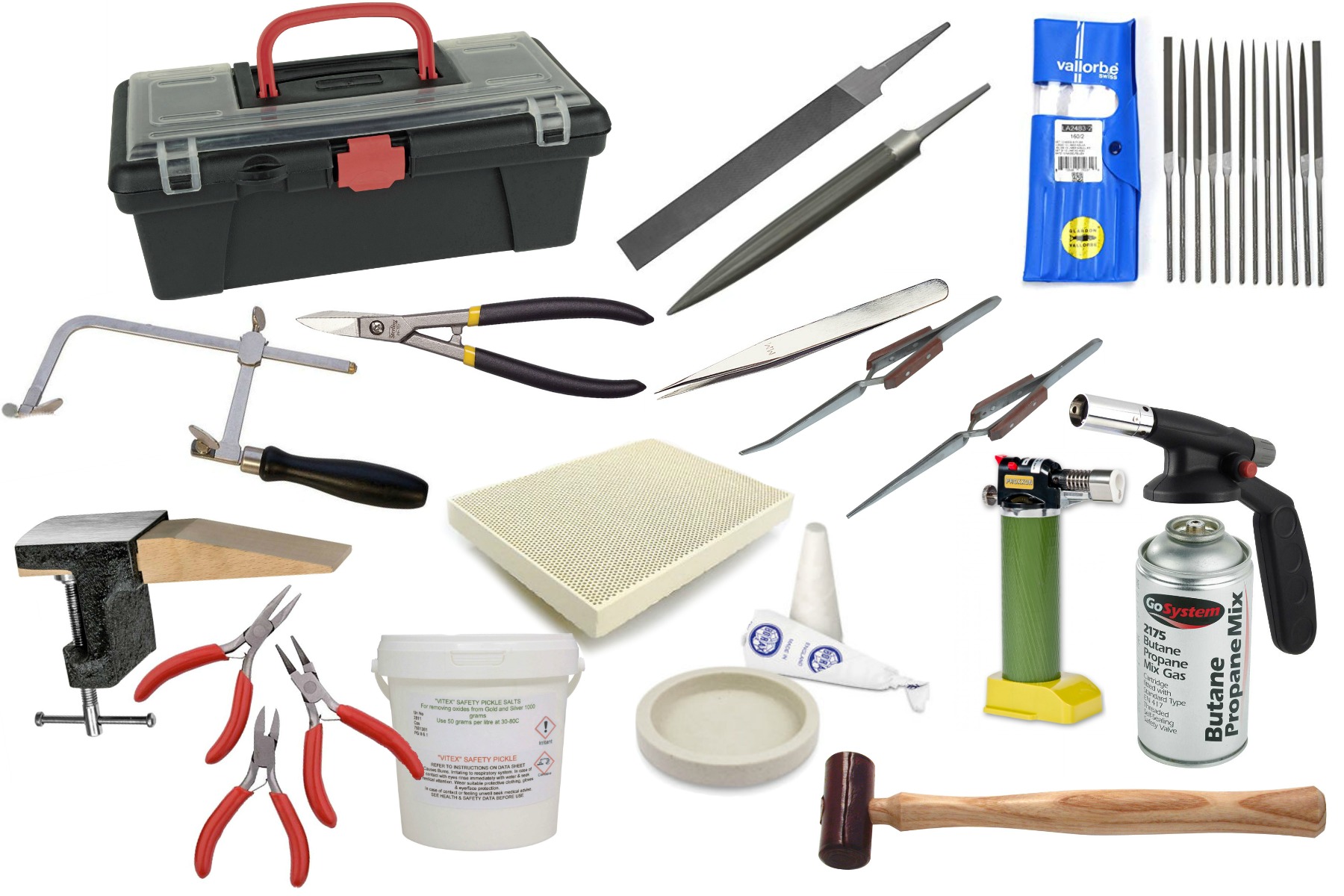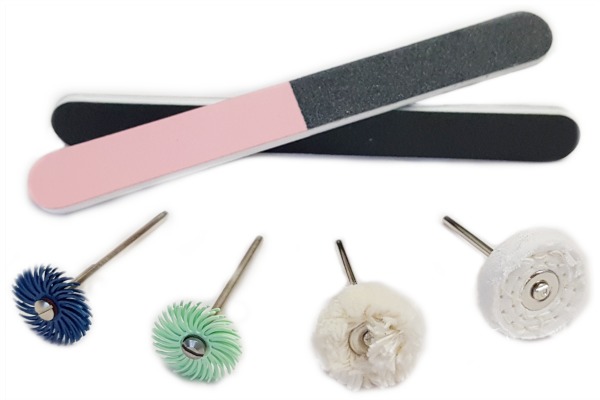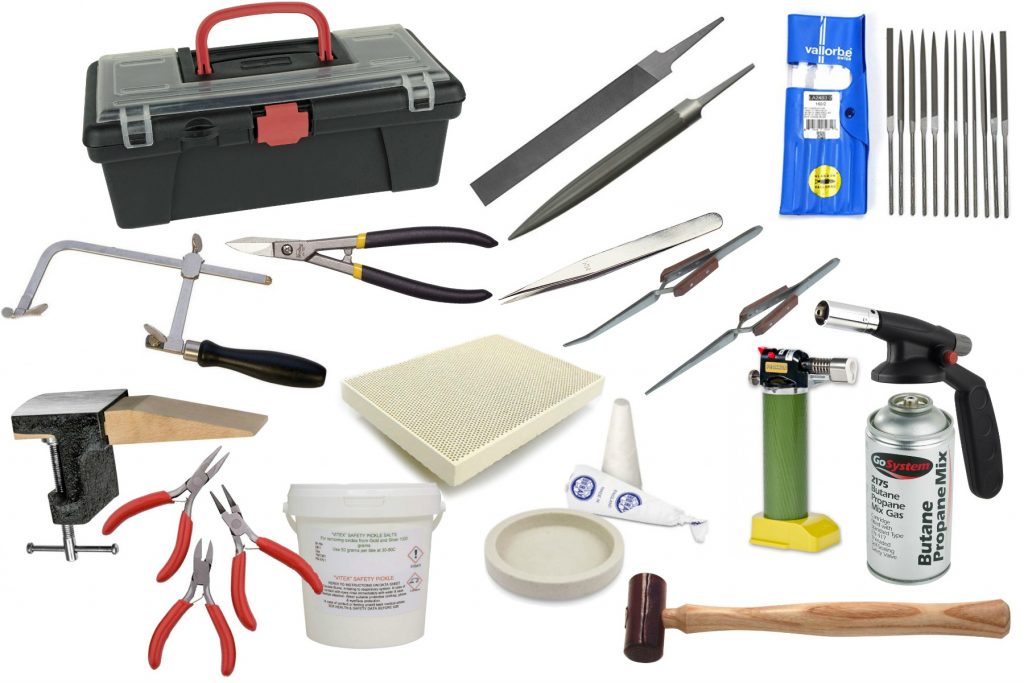The Essential Tools for Beginner Jewellers

Top 10 Jewellery Tools
- Blow Torch – I like to have 2 torches, one for large items (bangles and large rings) and one for small (jump rings and detail soldering). The combo of a Proxxon torch and a Go System plumbers torch have proven to work well.
- Soldering Bricks – a couple of soldering bricks is best, set up as a little hearth (i.e a base with sides). A mixture of smooth and honeycomb is a good idea.
- Tweezers – two types of tweezer are best. Small detail steel tweezers for placing pallions etc and larger reverse action tweezers for holding work as you solder (these often get used with a third hand).
- Pickle & Flux – Pickle is essential for removing oxides after soldering. There are lots of different options, the most popular is safety pickle which is best used warm. Flux (Borax) – is needed to solder to help keep the joint clean and allow the solder to flow. The most common is Borax in the form of a cone, as you get more proficient you might find one you prefer.
- Solder Snips – when you receive solder strip it is good practice to run it through the rolling mill to thin down then snip into tiny pallions with snips. I collect my pallions in labelled mini jam jars.
- A Set of Pliers – Pliers are necessary for all manor of shaping and opening/closing jump rings. It is worth investing in a good set of Maun parallel pliers, they are the best and do so many jobs! A nice set of basic jewellery pliers will easily get you started and last well.
- Raw Hide Mallet – Used to form metal without marring it. Use for things like reshaping a ring on a ring mandrel after soldering. You would need a metal hammer however for stretching or texturing.
- Bench Peg – a bench peg is a jewellers signature! It is used to work against, when piercing, filing, setting etc. This sort of bench peg can be put on any table and clamped down, ideal for beginners. The integral steel block is also a must for flattening, hammering and stamping etc.
- Jewellers Piercing Saw – For piercing out shapes, sawing through tube, cutting through jump rings etc. A basic jewellers saw is fine, but it is always worth buying good blades. Vallorbe are a good option. 2/0 is a good size to start with as a medium thickness.
- Files – a set of needle files is ideal, a large flat file and half round file is even better. Like blades it is worth buying well and going for Vallorbe, but whether you choose economy or top quality a cut 2 is the norm to start with. Files are graded 00 – 4 with 00 being the coarsest.

This is the basic kit that covers the essentials to make gold and silver jewellery. When I first started I would buy what I needed for particular projects.
So for example, once I began working on rings I bought a Wheatsheaf ring mandrel and Wheatsheaf ring sizers. It is well worth investing in industry standards such as Wheatsheaf as they will last your career. Likewise, when you start setting stones you can purchase burnishers, pushers and gravers which often need a bit of expertise to choose correctly.

In my next blog….
I will be covering the essential items to begin polishing and finishing your work. Essential information if you want to make professional jewellery!

